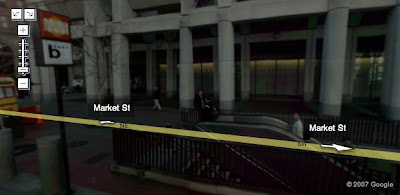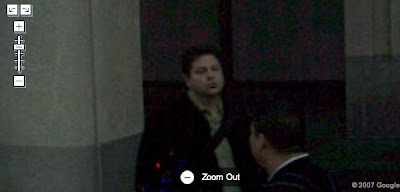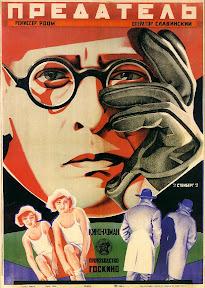Since I've been staying on a couch in the Richmond District of San Francisco, which is pretty far from the heart of the San Francisco I'm looking for, I have taken up playing Brain Age 2 on my host's Nintendo DS. The game is basically several programs that are designed to increase the functioning of certain centers of your brain; these programs are "training" for the central goal of the game: to decrease your "Brain Age" to 20 years old, which has been defined by the game as the optimum age for brain functioning. (Mine began at 50, I'm now at 36 with an all time low of 35 -- so basically I'm middle aged.)
Though I don't agree with all of the implicit claims of the game, I have been diligently working every day to decrease my brain age. Part of what is interesting about the game is that you cannot continue to play during the course of one day to improve your brain's age; you must return daily, complete the training programs, and attempt to get a better score on the Brain Age test. The test itself is a selection of several random programs, some of which are extremely hard and some of which are extremely easy, which is obviously subjective. After completing three tests your brain age is calculated, and once you've logged a brain age for the day, you can't take it back and you can't try again.
So, every morning for the past week, I wake up and play the game. Though I am trying to lower my Brain Age, what I also end up noticing is my ability to function in light of the previous night's events. This should be self evident to anyone who spends a moment in reflection, but playing the game has come to serve as a humble reminder of the connection between my mind and my body and the ways I learn and expand my mental capabilities.
I'd like to believe that playing the game has improved my ability to count, memorize, and give correct change. It certainly has improved my Sudoku skills.
Thursday, October 25, 2007
Sunday, October 21, 2007
Found Note - A Bit of California Geology
I found this note that taught me something new about California. I feel bad for the individual who lost it, but I'm glad I had the opportunity to learn a bit about the geology of the state. I've made transcribed the notes in a more readable style, but the content is unchanged.
What's strange about finding this sort of note is that this information is passed on out of context; it is meaningful on a surface level to me, the new reader, but perhaps crucial for the note-taker to get that A grade.
[Midterm of 4-7]
Petroglyphs - scratched patterns by native peoples.
CA deserts are arid = desolate kind of landscape
Ventifact - triangular shaped faces created by wind. Carved by consistent non changed winds -> sandblasting effect.
Sand accumulates to form dunes (Algodones Dunes (near El Centro))
*Chapter 7
Basin to Range Province characterized by 1 of 3 types of faults
1. Normal Fault + special type = detachment fault
2. Reverse
3. Strike-slip.
basin and ranges -> oldest rocks uplifted.
[October 11th]
Oldest rocks in CA in Basin + Range -> Metamorphic.
Basin - low land areas
Range - mountain areas
->a series of low land basins accented with mt ranges.
Fault = a feature that's formed when rocks are broken and moved along the break
Stress: causes rocks to break.
Tensional Stress (pulling apart kind of stress) - crust
What's strange about finding this sort of note is that this information is passed on out of context; it is meaningful on a surface level to me, the new reader, but perhaps crucial for the note-taker to get that A grade.
Wednesday, October 10, 2007
Google Maps Street View
Having recently moved to San Francisco, I've found that the housing market here is not only exceedingly competitive, but quite disheartening as well. That aside (I have another blog for emotions), today I found the wonderous/daunting Google Maps Street View.
San Francisco, being the darling cultural gem in gem in geeked out Silicon Valley, is one of the cities that Google has photographed so extensively as to offer a view of houses right at their front doors. Not all of the city has been shot so far, but I assume that will come shortly. Basically, one is able to view a Google map and, in some locations, shift the perspective to the street. Not only can I see where the house that I'm visiting is located, I can get a look at the outside of the place before I even take the time to go there.
Useful? Only sort of. But a good reminder that we must, from now on, be aware of the fact that vision is becoming total; its scale is widening, becoming more precise and having more depth of field -- which itself basically gives way to another moment of vision, as in Google Maps Street View. In the web 2.0 program, you can actually see people on the street who happened to be there the moment Google took the picture. They exist like some strange ghost-like presence, perpetually tagged into the landscape for the world to see. You can make out their faces, see their boredom, their hurrying steps, or a personal smile to themselves as they walk to work.
Diving in to see people heading to work, going about their day.
The map:
View Larger Map
The street:

Upclose, forever bonded to this simulacral space:



San Francisco, being the darling cultural gem in gem in geeked out Silicon Valley, is one of the cities that Google has photographed so extensively as to offer a view of houses right at their front doors. Not all of the city has been shot so far, but I assume that will come shortly. Basically, one is able to view a Google map and, in some locations, shift the perspective to the street. Not only can I see where the house that I'm visiting is located, I can get a look at the outside of the place before I even take the time to go there.
Useful? Only sort of. But a good reminder that we must, from now on, be aware of the fact that vision is becoming total; its scale is widening, becoming more precise and having more depth of field -- which itself basically gives way to another moment of vision, as in Google Maps Street View. In the web 2.0 program, you can actually see people on the street who happened to be there the moment Google took the picture. They exist like some strange ghost-like presence, perpetually tagged into the landscape for the world to see. You can make out their faces, see their boredom, their hurrying steps, or a personal smile to themselves as they walk to work.
Diving in to see people heading to work, going about their day.
The map:
View Larger Map
The street:

Upclose, forever bonded to this simulacral space:



Labels:
Baudrillard,
digital space,
emptiness,
simulacra,
total vision,
Virilio
Monday, October 01, 2007
3rd World Farmer
One of my favorite blogs, Pruned, called my attention to a game called 3rd World Farmer.
The game is, as one could probably decipher, in the "third world." The point of the game is to raise your family and increase your earning potential. The game simulates common third world problems such as drought, revolution, and corruption, which all affect your ability to make a living. It goes into surprising depth for a flash-based simulation: you raise children who can either go to school (and so be available less for work) or get married and leave the farm (but earn a nice dowry), there are infrastructural building opportunities, and aging is a factor. To go directly to the game, click here (but look over the hunger related subtexts at some point).
The game must be a bit too easy once you get the hang of it, as I won in 26 turns. But the high scores reveal a much deeper obsession with actually making that Saharan farm worth millions. All intelligent people will understand this isn't a simulation per se, but a metaphor for the hardships and catastrophes faced by "third world" farmers. (Now you too can toil the African soil, but from the comfort of your first world nation.)
The game is, as one could probably decipher, in the "third world." The point of the game is to raise your family and increase your earning potential. The game simulates common third world problems such as drought, revolution, and corruption, which all affect your ability to make a living. It goes into surprising depth for a flash-based simulation: you raise children who can either go to school (and so be available less for work) or get married and leave the farm (but earn a nice dowry), there are infrastructural building opportunities, and aging is a factor. To go directly to the game, click here (but look over the hunger related subtexts at some point).
The game must be a bit too easy once you get the hang of it, as I won in 26 turns. But the high scores reveal a much deeper obsession with actually making that Saharan farm worth millions. All intelligent people will understand this isn't a simulation per se, but a metaphor for the hardships and catastrophes faced by "third world" farmers. (Now you too can toil the African soil, but from the comfort of your first world nation.)
Subscribe to:
Comments (Atom)

